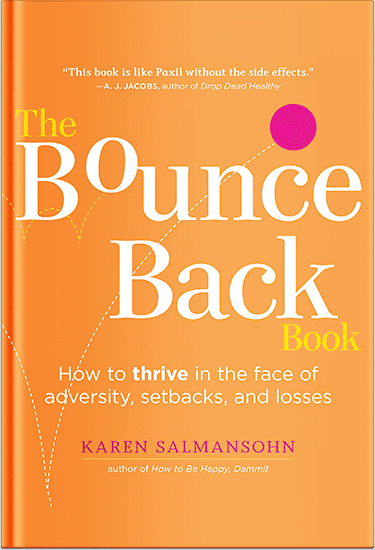 I’m sharing about the basics of handling a car accident because I’m a bestselling wellness author and leading Behavioral Change Expert. I love to help people to live healthier lives.
I’m sharing about the basics of handling a car accident because I’m a bestselling wellness author and leading Behavioral Change Expert. I love to help people to live healthier lives.
Chances are you’ll be in a car accident if you drive for long enough. Even with being a skilled driver and following all safety best practices, you can’t control what other drivers may do. You can only hope that you’re never in a serious car accident.
With it being only a matter of when rather than if for most motorists, you should prepare for how to respond after a car accident. The actions you take after an accident can have long-term implications for any injuries and your legal rights.
According to an expert from Cohen and Winters, “Car accidents are much more complicated than most people realize. Beyond the stress and potential for injuries, there are so many legal considerations. If you were injured and need compensation, your actions could impact your rights. It could even have implications for a potential insurance claim. That’s why drivers should understand the basics of responding to a traffic accident.”
But what should you do if you are in a car accident? Read on for some steps you can follow.
Check Yourself and Vehicle Passengers for Injuries
The first step is to check yourself and your passengers for injuries. If you feel pain or discomfort, try to remain still until help arrives. Ask others in your vehicle if they are hurt, and look for visible injuries such as bleeding, bruising, or swelling. You should also be cautious. Internal injuries might not be as obvious as others. Avoid moving anyone with neck or back pain. Wait for paramedics to assist with any person who is unconscious, disoriented, or suffering a severe injury.
Contact Emergency Services and Police
Call emergency services to help any injured people. Even minor injuries should receive medical attention. You should also avoid moving people with severe injuries unless they are at risk from fire or other hazards. When you call 911, remain calm and explain the situation as best you can. Make sure to provide the location, number of injured parties, and descriptions of the injuries.
You should also request a police response for serious accidents. Even if the accident isn’t serious, you might need police to settle disputes or move vehicles blocking the road. The police can also assess the scene and provide reports that may help with insurance claims or lawsuits.
Move Your Car if Possible
Once you’ve assessed injuries and called 911, you should consider moving your vehicle out of the roadway. However, if your car is disabled or there is a person with severe injuries in the vehicle, leave it where it is. Turn on the hazard lights when moving the vehicle and signal to other drivers. If you have an uninjured passenger, they could help alert traffic as you move your vehicle. Mark the scene with reflective triangles or flares if you have them.
Contact the Other Parties Involved
After ensuring your safety and that of your passengers, make contact with the drivers and passengers in other vehicles. Ask if there are any injuries or if anyone needs help. If you haven’t already called emergency services and injuries are reported, call now. You might also want to call to report the additional injuries if you already called for people in your car.
Once you’ve accounted for any injuries, it’s time to exchange information with the other drivers. Ask for their full names and contact information. You should also ask for their driver’s license and write down their license plate number. It is also important to get their insurance information. Taking pictures of their license plate, driver’s license, and insurance card can help you record this information.
Don’t Discuss the Accident
While you should communicate with other parties and exchange information, you should avoid talking about the accident. Do not admit fault, apologize, or make accusations, as anything you say could be used against you in an insurance claim or legal case. If others try to blame you, stay calm and avoid engaging in arguments. Exchange the necessary information and let the police and insurance adjusters determine fault. Stick to the facts when speaking with law enforcement and avoid speculating about what caused the accident.
It is a good idea to call your car accident attorney and discuss only the specifics of the accident with them.
Collect Information About the Accident
After exchanging information, start collecting information and evidence concerning the accident. You can start by taking photos of the scene. Get multiple angles of the vehicles and then cover any road conditions or marks that may be relevant. Beyond capturing photos, you could also take notes. Record facts like the time of day, weather conditions, whether the sun was up, etc.
If you have a dash cam, make sure to preserve the footage, as it can be crucial evidence. Using dash cam footage in accidents provides an objective record of what happened, which is essential when dealing with insurance companies or legal proceedings.
You should also contact any witnesses that may be at the scene. Get their names, contact information, and a brief statement about what they saw. These statements can be valuable if there are disputes about fault. However, you should not discuss your opinions or try to influence witnesses when taking statements.
Go See a Doctor
It is a good idea to seek medical attention even if you feel fine after a car accident. Some injuries are not immediately apparent and may worsen over time. With early medical attention, you can ensure a better outcome. Seeing a doctor also provides medical documentation, which can support an insurance claim or legal case.
It is also important to care for yourself after an accident. Follow your doctor’s orders and stick to your treatment plan. Avoid activities that can aggravate any injuries. Allow yourself time to rest and heal. You should also keep all documentation and receipts in case of an insurance claim or lawsuit.
Recap: Basics of Handling a Car Accident
By following these tips, you can do a lot to protect your safety and legal rights after an accident. However, some people may need legal representation. Most personal injury lawyers offer free consultations and work on a contingency basis. That means there is no risk to meeting a lawyer, even if you are unsure about needing one.
Stay Calm In Stressful Times
Check out my research-backed and therapist recommended online program: The Anxiety Cure Course.
P.S. Before you zip off to your next Internet pit stop, check out these 2 game changers below - that could dramatically upscale your life.
1. Check Out My Book On Enjoying A Well-Lived Life: It’s called "Your To Die For Life: How to Maximize Joy and Minimize Regret Before Your Time Runs Out." Think of it as your life’s manual to cranking up the volume on joy, meaning, and connection. Learn more here.
2. Life Review Therapy - What if you could get a clear picture of where you are versus where you want to be, and find out exactly why you’re not there yet? That’s what Life Review Therapy is all about.. If you’re serious about transforming your life, let’s talk. Learn more HERE.
Think happier. Think calmer.
Think about subscribing for free weekly tools here.
No SPAM, ever! Read the Privacy Policy for more information.
One last step!
Please go to your inbox and click the confirmation link we just emailed you so you can start to get your free weekly NotSalmon Happiness Tools! Plus, you’ll immediately receive a chunklette of Karen’s bestselling Bounce Back Book!


 I’m sharing about the basics of handling a car accident because I’m a
I’m sharing about the basics of handling a car accident because I’m a 